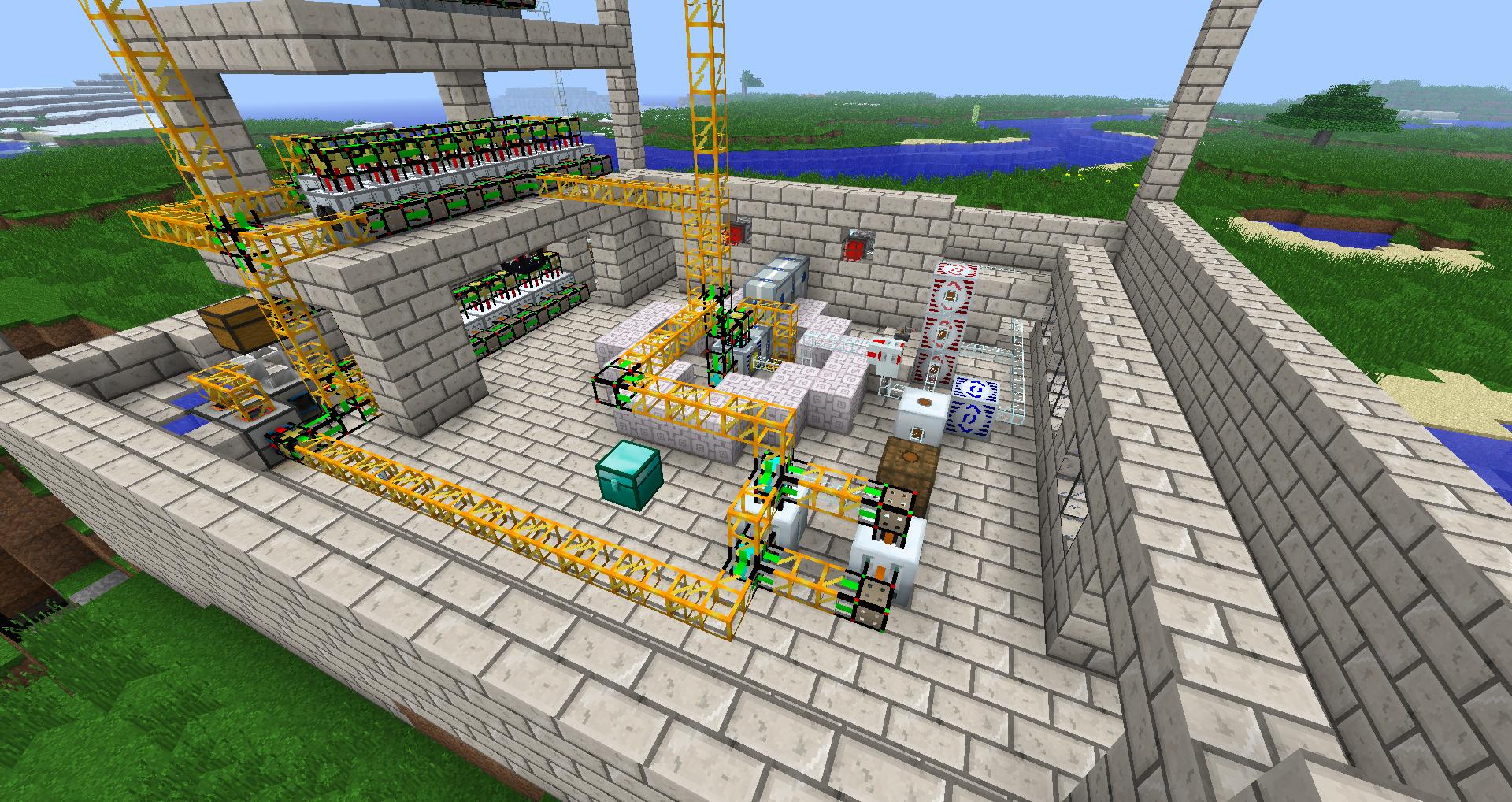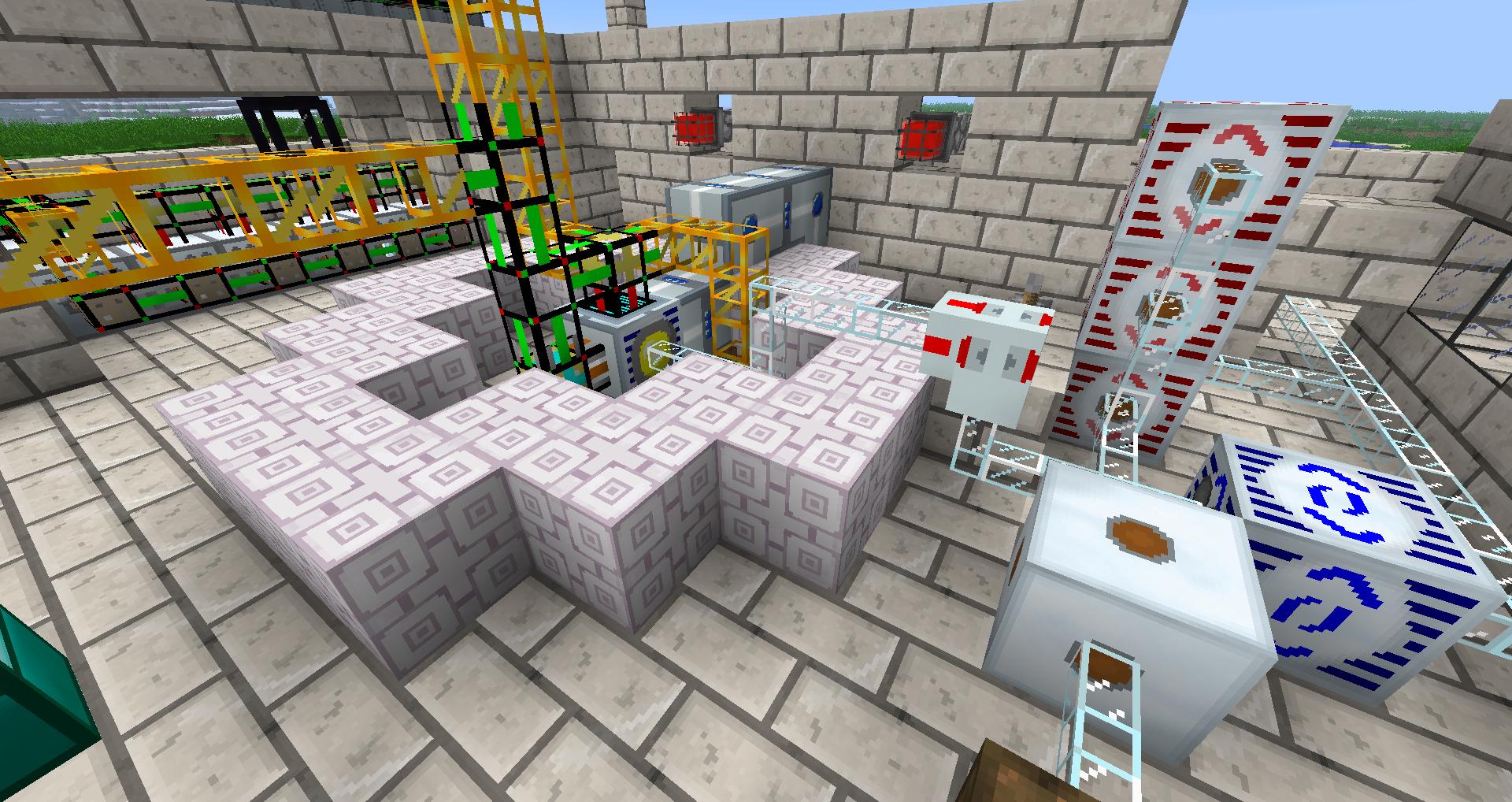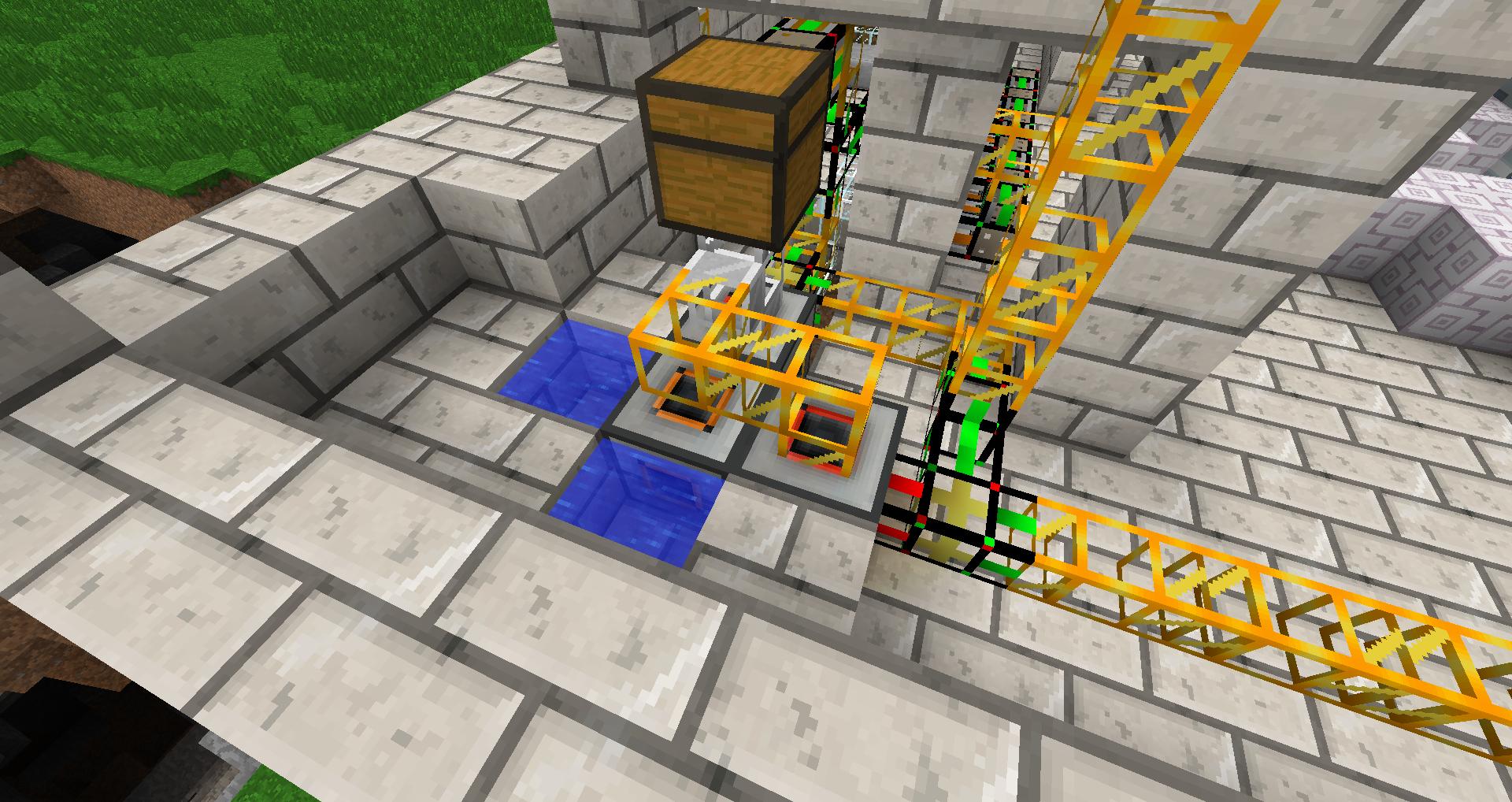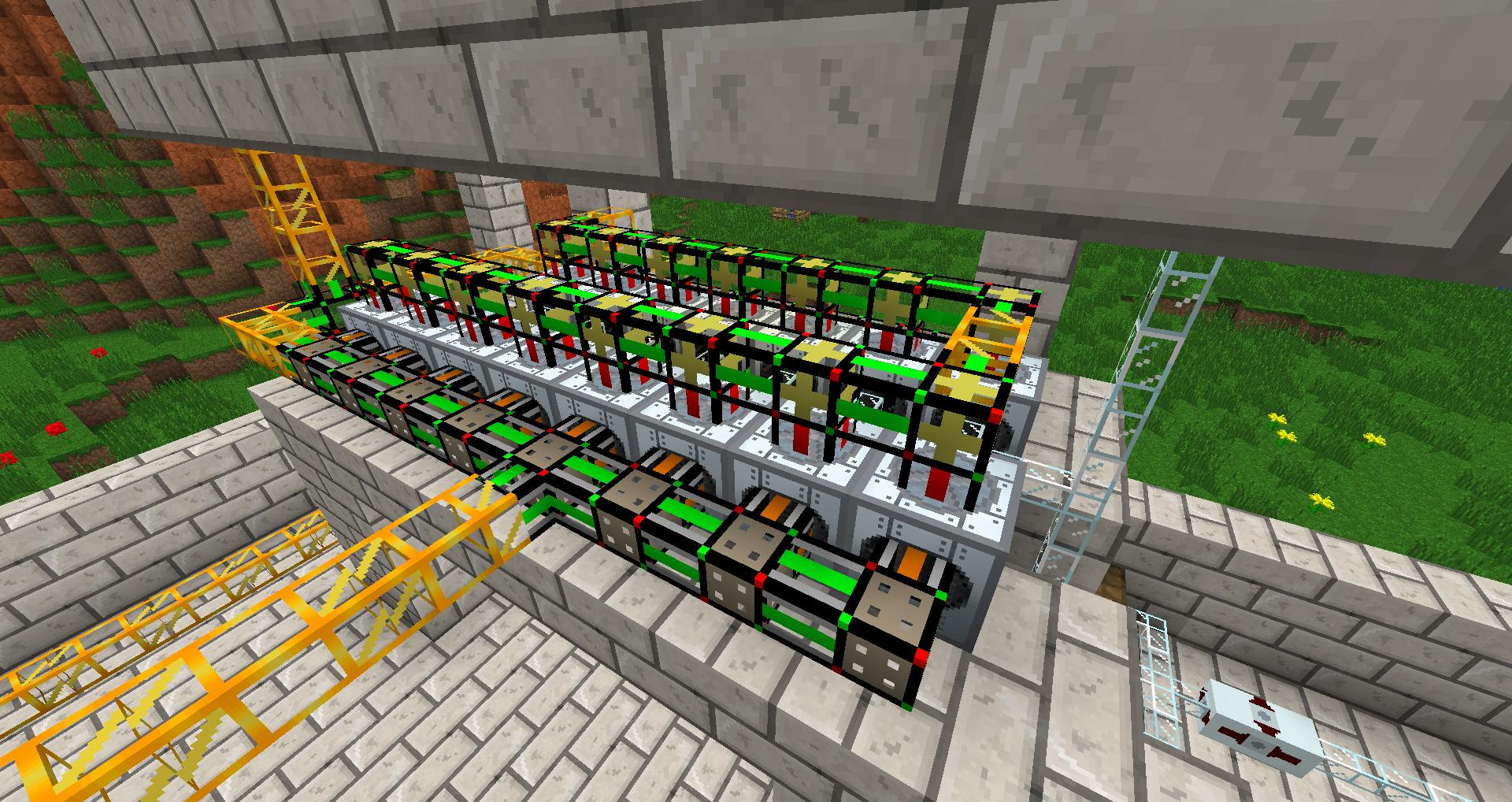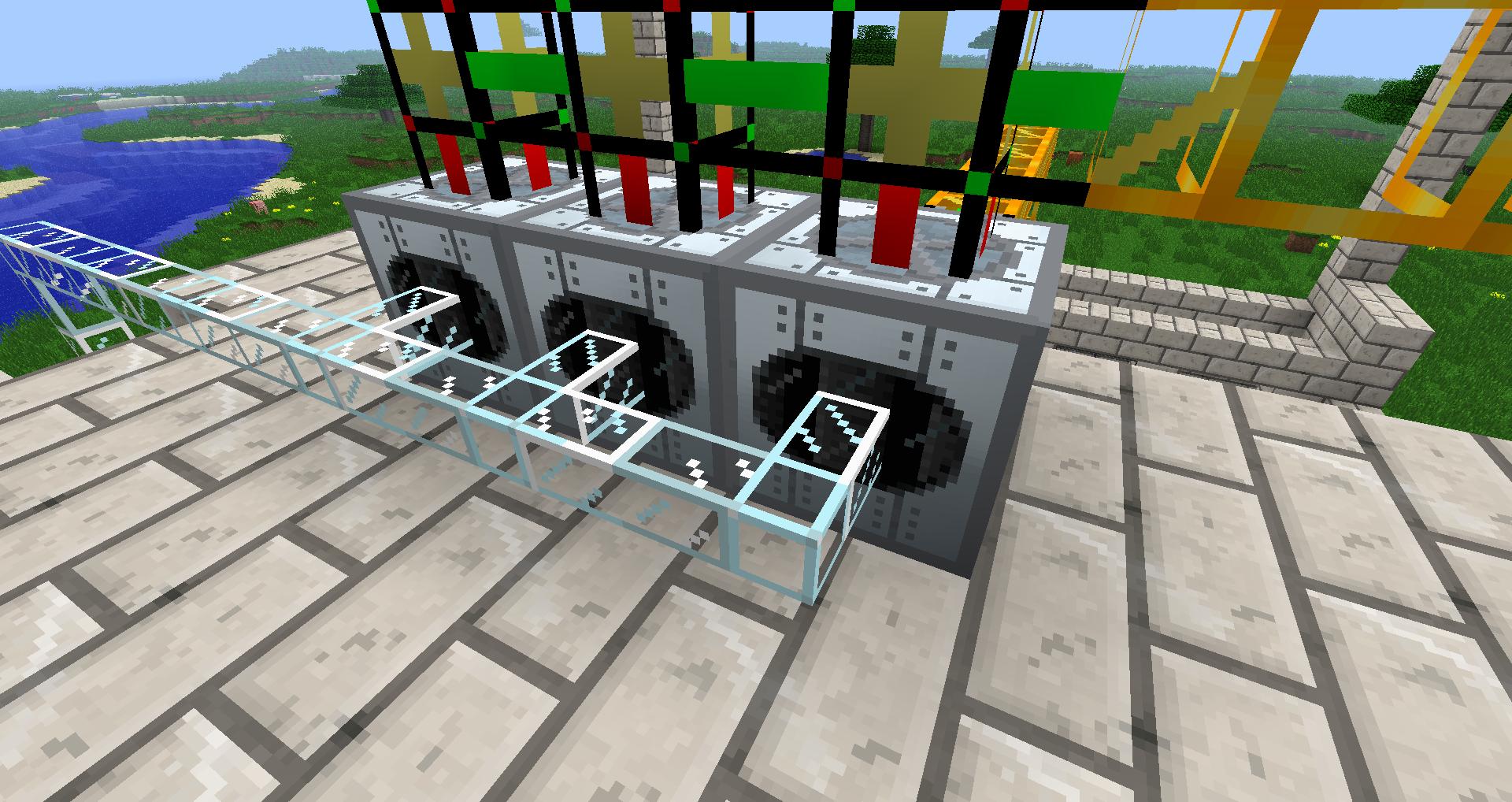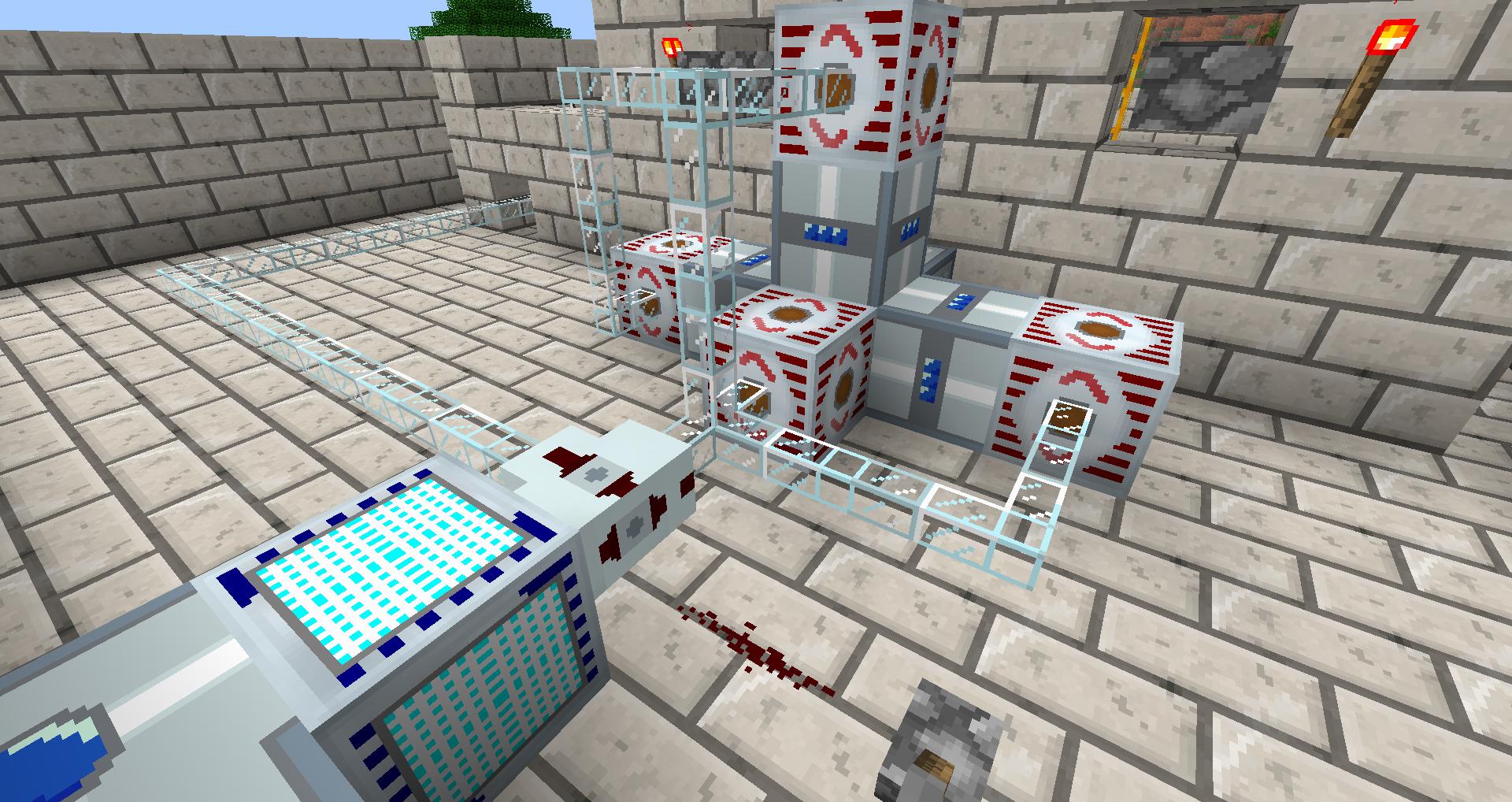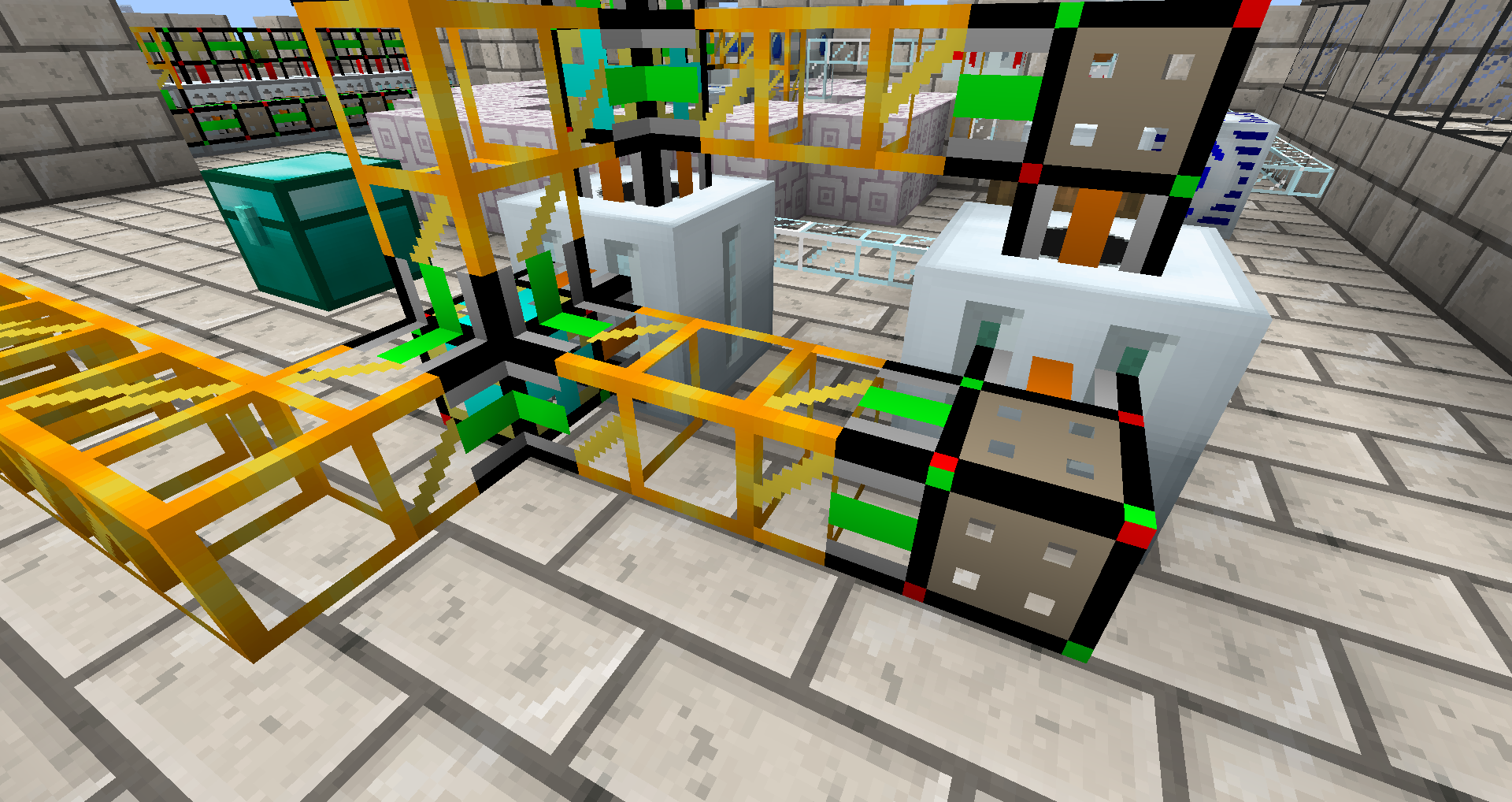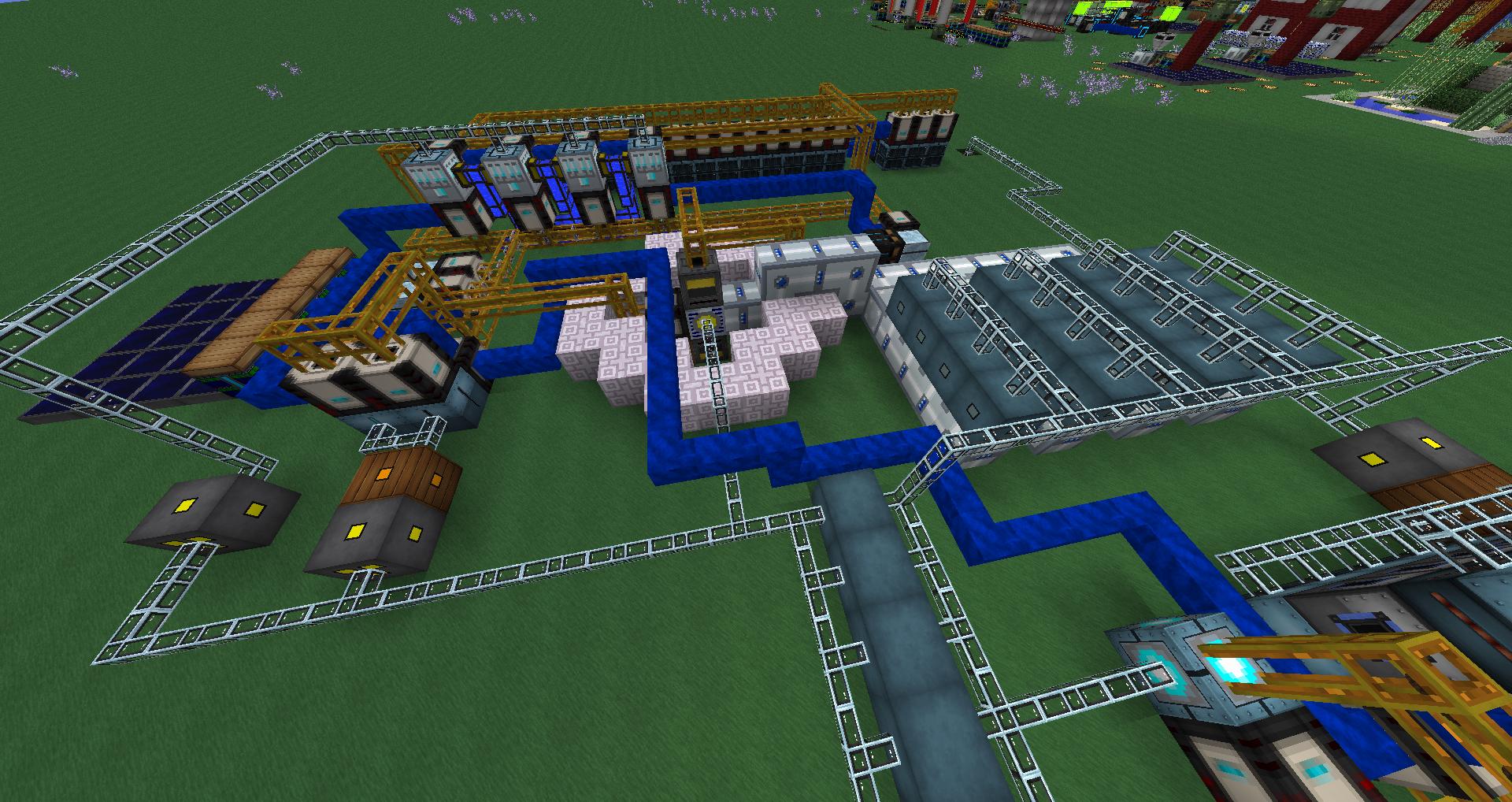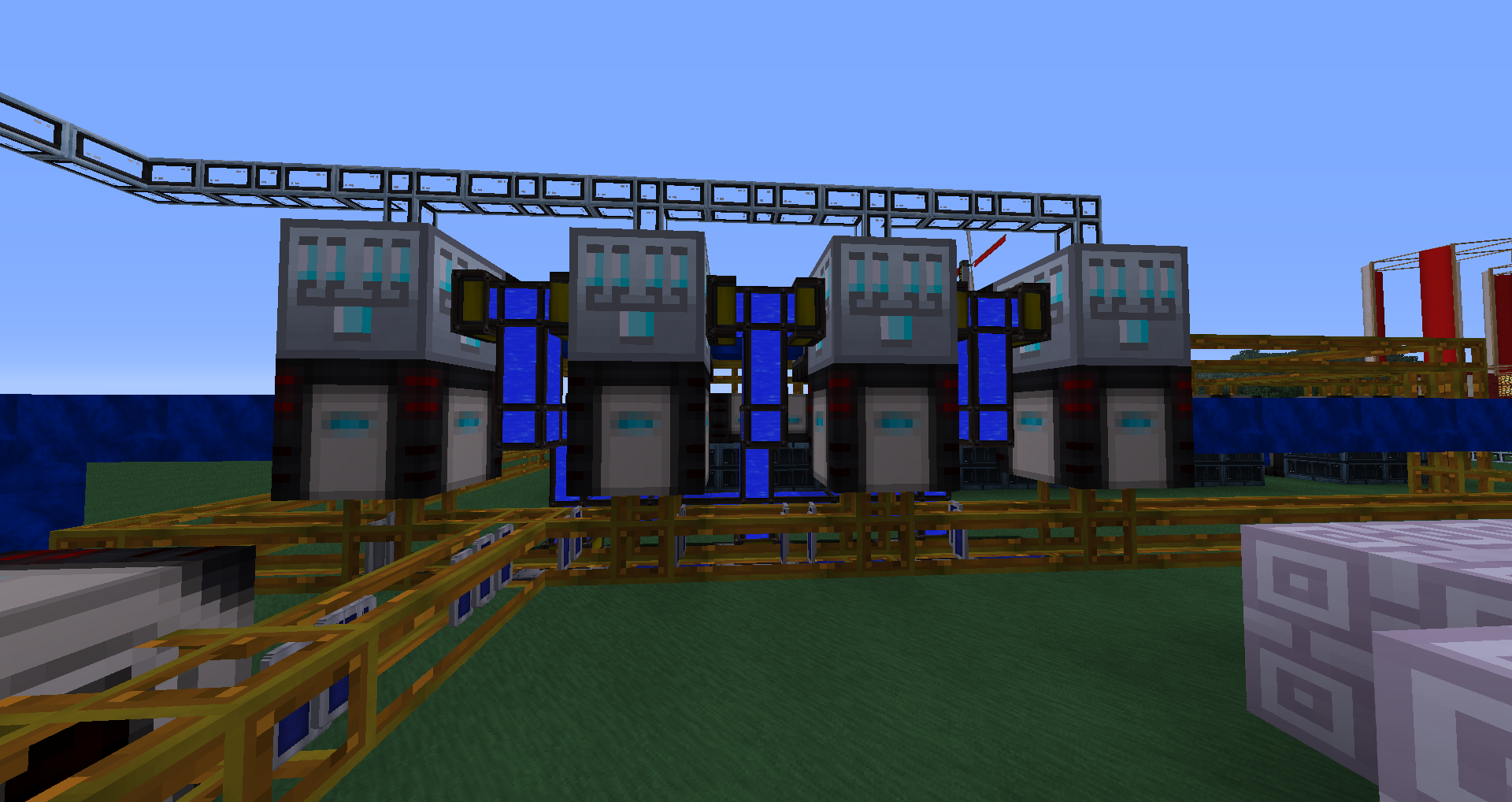Several forumers have completed designs, based more or less around the ideas in this post. Here are links to their builds!
woddorl
silenos
ff255away
additionally, masterventis built one that had problems but would be easily fixed (I believe woddorl achieved this).
Background:
I finally have my fusion reactor set up and running on helium-3 and deuterium, but wanted a way to fully automate it. No buttons to press, no restarting the reactor, no hands on. Helium-3 needs something to mine and will eventually run out. This requires continuous effort, no bueno! Lets try the deuterium+tritium reaction, which can be fully automated.
Note: I had issues getting both cells out of my fusion reactor, meaning this costs me something along the lines of 1 tin cell every 51.2 seconds, or 1 tin every 102.4 seconds. This isn't the case for everybody. You may want to babysit your reactor for several cycles before going totally hands off.
Ingredients:
this requires redpower to operate efficiently, and uses some of their tools to make things as cheap as possible. This is all theorycrafting, so bear with me.
We need 7 industrial electrolyzers; 18 industrial centrifuges; the ability to fill 5 tin cells with water every 6 seconds; an extractor; and we need a fusion reactor.
1) 6 industrial electrolyzers turning water cells into electrolyzed water.
2) 1 industrial electrolyzer turning electrolyzed water into hydrogen (extract the compressed air cell, and send it back to be filled with water)
3) 15 industrial centrifuges turning hydrogen into deuterium
4) 3 industrial centrifuges turning deuterium into tritium
optional:
6) extractor to get the cell back from the helium product of H2+H3, OR adding 1 tin cell every 51.2 seconds.
The explanation:
You may be asking yourself, "What does a 22 year old guy who just had his nails painted bright blue by a 13 year old girl know about nuclear fusion?" Your answer would be, "jack shit." What this guy does know is how to automate.
We're going to work backwards, first.
1) A deuterium+tritium reaction lasts 1024 ticks, or 51.2 seconds.
2) It takes 150 seconds to turn 4 deuterium into 1 tritium
3) It takes 150 seconds to turn 4 hydrogen into 1 deuterium
4) it takes 5 seconds to turn 6 electrolyzed water into 4 hydrogen
5) it takes 6 seconds to turn 1 water cell into 1 electrolyzed water
So this is the time cost. The time cost is infinitely more important than the eu cost, for reasons I'm about to explain.
1) It takes 150 seconds for 1 tritium, and we need 1 every 51.2 seconds. If we have 3 industrial electrolyzers, we can use 1 tritium every 50 seconds, leaving us with a 1.2 second window.
3) It takes 150 seconds for 1 deuterium, and we need 5 every 51.2 seconds (1 for the reaction, 4 for making 1 tritium). This means we need 15 electrolyzers producing deuterium, resulting in 5 deuterium every 50 seconds.
4) Now we need to skip back.
-We need to be producing enough hydrogen to making 5 deuterium every 50 seconds.
-4 Hydrogen (needed for 1 deuterium) costs 6 electrolyzed water and 5 seconds.
-1 electrolyzed water costs 6 seconds.
-We need 5 deuterium every 50 seconds, which would mean 4 hydrogen and 6 electrolyzed water every 10 seconds. Easy!
So, lets build this thing:
1) Start with your water feeding machine. I'm not designing an automated water cell filler for you, do that yourself! You need to be able to produce 6 water cells every 10 seconds.
2) You need to add 2 tin cells from an outside source every 50 seconds. This can either be via uu-matter or an outside source. If you extract the helium cell that results from the H3+H2 reaction instead of storing it away, you only need 1 tin cell every 50 seconds.
3) Have your first 6 electrolyzers constantly running water cells, to output electrolyzed water.
4) Set the retriever to pull every 10 seconds. Pull the electrolyzed water and place it in your next electrolyzer.
5) retrieve the compressed air and put it in an extractor
6) this is where things change a little. Your going to need rp2 managers. You need to keep 4 hydrogen cells in each of the next 15 centrifuges. Thats a lot of managers.
7) same deal as 6), you need to keep 4 deuterium in each of the next 3 centrifuges.
8) I'm going to recommend keeping 2 deuterium and 2 tritium in the fusion reactor at any given moment, because I'm paranoid as hell.
9) suck out the helium cell, and either extract it or store it away to be used in a different project.
10) you need a retriever pulling empty cells from all electrolyzers output side, to be filled back up with water.
Final Thoughts:
If you don't choose to extract the helium cell, you can add one tin cell every 51.2 seconds, or what would equate to costing you 1 tin every 102.4 seconds. That is an awfully low price to achieve infinite run time in a fusion reactor. The eu cost can be broken down to each reaction, costing 1 tritium and 1 deuterium. So, you have [4 deuterium -> tritium]15000eu+[20 hydrogen -> 5 deuterium]75000eu+[30 electrolyzed water -> 20 hydrogen]15000eu+[30 water cells -> 30 electrolyzed water cells]491520eu=596520eu to run the reactor, with an output of 33,554,432 eu, with a net output of 32,957,912eu every 51.2 seconds. Even simpler, that means you're running at approximately 32,189eu a tick.
If you're worried about capacity, just run the fuel generation (all of the industrial electrolyzers) several times before turning on the fusion reactor.
It should be noted that this guide is flawed. The theory is sound, but the theoretical construction was only loosely thought out. If you're going to use managers, you're going to need tons of them; I used almost a whole stack because every input and every output requires a manager. I used 4 industrial electrolyzers with water pumped into their tops- this was a safe number. 3 extractors, with 2 overclockers each were enough to keep up with everything, with plenty of time to kill. Always keep at least 2 tritium and 2 deuterium in your reactor- you will be very unhappy otherwise. Finally, it doesn't seem like anybody has engineered a solution to preventing the tritium cells from stealing all of your cells. Make sure to have a number of tin cells feeding into your system constantly.
woddorl
silenos
ff255away
additionally, masterventis built one that had problems but would be easily fixed (I believe woddorl achieved this).
Background:
I finally have my fusion reactor set up and running on helium-3 and deuterium, but wanted a way to fully automate it. No buttons to press, no restarting the reactor, no hands on. Helium-3 needs something to mine and will eventually run out. This requires continuous effort, no bueno! Lets try the deuterium+tritium reaction, which can be fully automated.
Note: I had issues getting both cells out of my fusion reactor, meaning this costs me something along the lines of 1 tin cell every 51.2 seconds, or 1 tin every 102.4 seconds. This isn't the case for everybody. You may want to babysit your reactor for several cycles before going totally hands off.
Ingredients:
this requires redpower to operate efficiently, and uses some of their tools to make things as cheap as possible. This is all theorycrafting, so bear with me.
We need 7 industrial electrolyzers; 18 industrial centrifuges; the ability to fill 5 tin cells with water every 6 seconds; an extractor; and we need a fusion reactor.
1) 6 industrial electrolyzers turning water cells into electrolyzed water.
2) 1 industrial electrolyzer turning electrolyzed water into hydrogen (extract the compressed air cell, and send it back to be filled with water)
3) 15 industrial centrifuges turning hydrogen into deuterium
4) 3 industrial centrifuges turning deuterium into tritium
optional:
6) extractor to get the cell back from the helium product of H2+H3, OR adding 1 tin cell every 51.2 seconds.
The explanation:
You may be asking yourself, "What does a 22 year old guy who just had his nails painted bright blue by a 13 year old girl know about nuclear fusion?" Your answer would be, "jack shit." What this guy does know is how to automate.
We're going to work backwards, first.
1) A deuterium+tritium reaction lasts 1024 ticks, or 51.2 seconds.
2) It takes 150 seconds to turn 4 deuterium into 1 tritium
3) It takes 150 seconds to turn 4 hydrogen into 1 deuterium
4) it takes 5 seconds to turn 6 electrolyzed water into 4 hydrogen
5) it takes 6 seconds to turn 1 water cell into 1 electrolyzed water
So this is the time cost. The time cost is infinitely more important than the eu cost, for reasons I'm about to explain.
1) It takes 150 seconds for 1 tritium, and we need 1 every 51.2 seconds. If we have 3 industrial electrolyzers, we can use 1 tritium every 50 seconds, leaving us with a 1.2 second window.
3) It takes 150 seconds for 1 deuterium, and we need 5 every 51.2 seconds (1 for the reaction, 4 for making 1 tritium). This means we need 15 electrolyzers producing deuterium, resulting in 5 deuterium every 50 seconds.
4) Now we need to skip back.
-We need to be producing enough hydrogen to making 5 deuterium every 50 seconds.
-4 Hydrogen (needed for 1 deuterium) costs 6 electrolyzed water and 5 seconds.
-1 electrolyzed water costs 6 seconds.
-We need 5 deuterium every 50 seconds, which would mean 4 hydrogen and 6 electrolyzed water every 10 seconds. Easy!
So, lets build this thing:
1) Start with your water feeding machine. I'm not designing an automated water cell filler for you, do that yourself! You need to be able to produce 6 water cells every 10 seconds.
2) You need to add 2 tin cells from an outside source every 50 seconds. This can either be via uu-matter or an outside source. If you extract the helium cell that results from the H3+H2 reaction instead of storing it away, you only need 1 tin cell every 50 seconds.
3) Have your first 6 electrolyzers constantly running water cells, to output electrolyzed water.
4) Set the retriever to pull every 10 seconds. Pull the electrolyzed water and place it in your next electrolyzer.
5) retrieve the compressed air and put it in an extractor
6) this is where things change a little. Your going to need rp2 managers. You need to keep 4 hydrogen cells in each of the next 15 centrifuges. Thats a lot of managers.
7) same deal as 6), you need to keep 4 deuterium in each of the next 3 centrifuges.
8) I'm going to recommend keeping 2 deuterium and 2 tritium in the fusion reactor at any given moment, because I'm paranoid as hell.
9) suck out the helium cell, and either extract it or store it away to be used in a different project.
10) you need a retriever pulling empty cells from all electrolyzers output side, to be filled back up with water.
Final Thoughts:
If you don't choose to extract the helium cell, you can add one tin cell every 51.2 seconds, or what would equate to costing you 1 tin every 102.4 seconds. That is an awfully low price to achieve infinite run time in a fusion reactor. The eu cost can be broken down to each reaction, costing 1 tritium and 1 deuterium. So, you have [4 deuterium -> tritium]15000eu+[20 hydrogen -> 5 deuterium]75000eu+[30 electrolyzed water -> 20 hydrogen]15000eu+[30 water cells -> 30 electrolyzed water cells]491520eu=596520eu to run the reactor, with an output of 33,554,432 eu, with a net output of 32,957,912eu every 51.2 seconds. Even simpler, that means you're running at approximately 32,189eu a tick.
If you're worried about capacity, just run the fuel generation (all of the industrial electrolyzers) several times before turning on the fusion reactor.
It should be noted that this guide is flawed. The theory is sound, but the theoretical construction was only loosely thought out. If you're going to use managers, you're going to need tons of them; I used almost a whole stack because every input and every output requires a manager. I used 4 industrial electrolyzers with water pumped into their tops- this was a safe number. 3 extractors, with 2 overclockers each were enough to keep up with everything, with plenty of time to kill. Always keep at least 2 tritium and 2 deuterium in your reactor- you will be very unhappy otherwise. Finally, it doesn't seem like anybody has engineered a solution to preventing the tritium cells from stealing all of your cells. Make sure to have a number of tin cells feeding into your system constantly.
